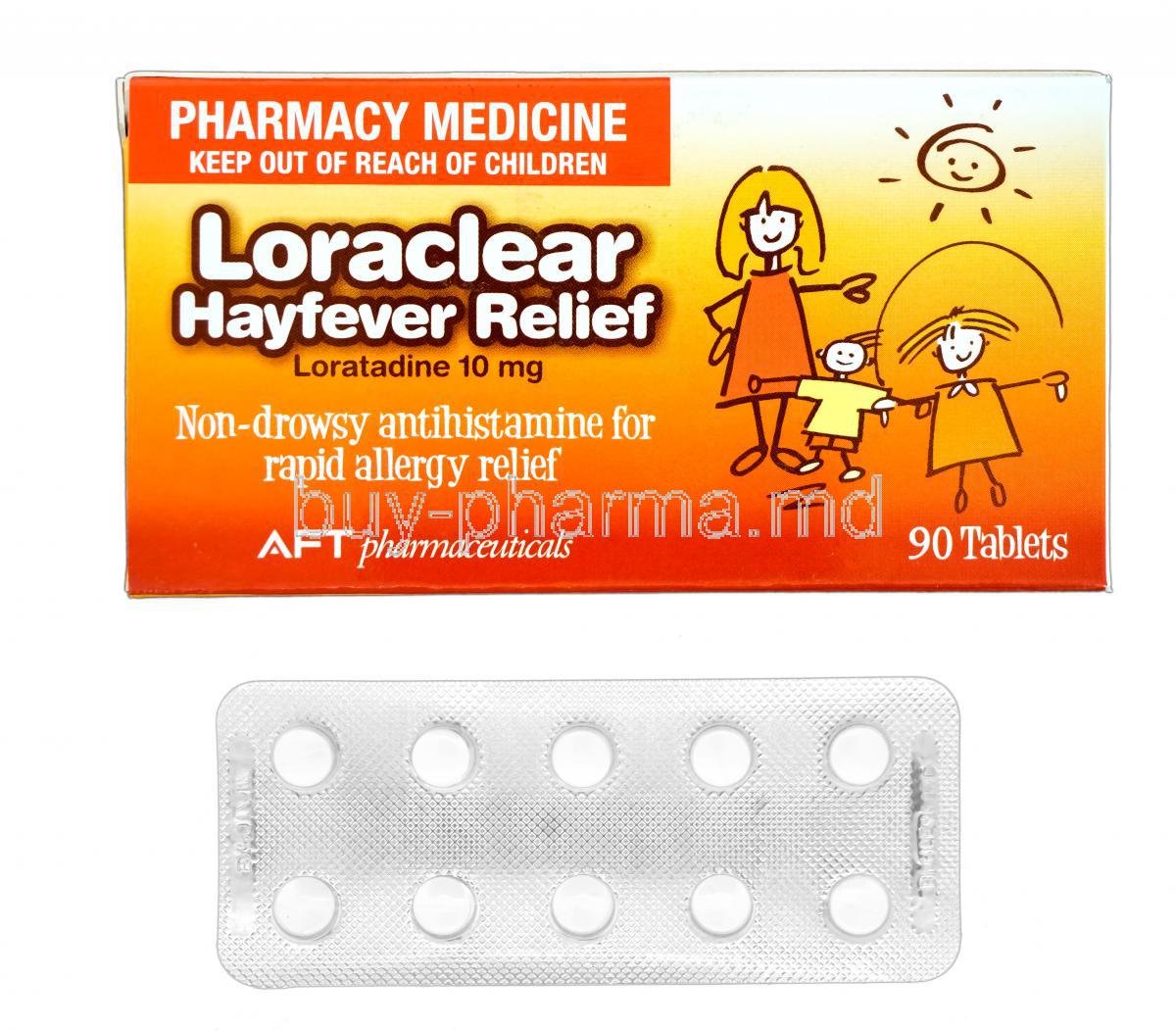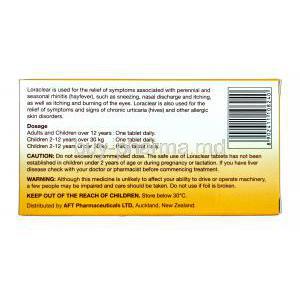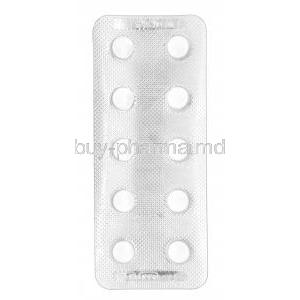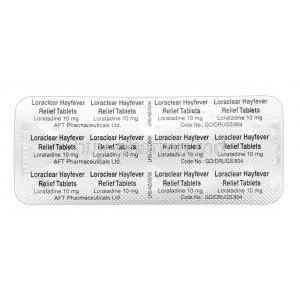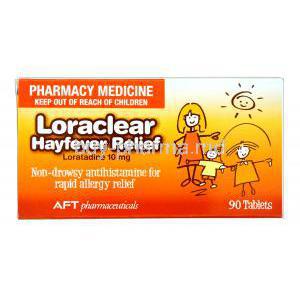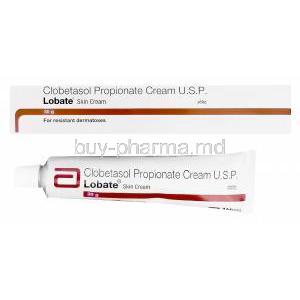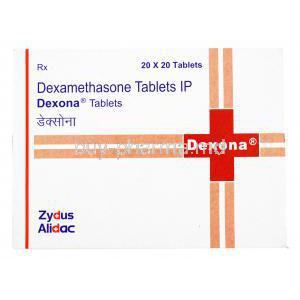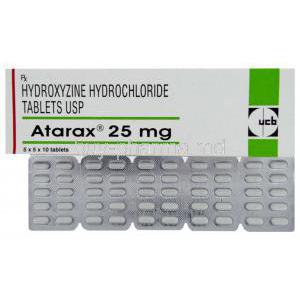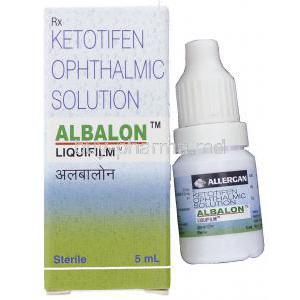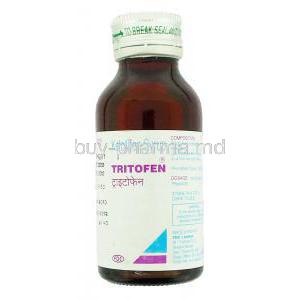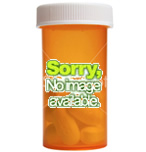Introduction to Loraclear (Loratadine)
Overview of Loraclear: Brand Name and Classification
Loraclear is a proprietary brand of loratadine, a widely prescribed second-generation antihistamine. It is classified pharmacologically as a selective peripheral H1-receptor antagonist, offering effective relief from a broad spectrum of allergic conditions. Loraclear is well-regarded for its rapid onset, sustained efficacy, and minimal sedative properties.
What is Loratadine? – Second-Generation Non-Sedating Antihistamine
Loratadine belongs to the class of non-sedating antihistamines, developed to address the limitations of earlier antihistamines. Unlike its predecessors, loratadine does not cross the blood-brain barrier in significant amounts, making it a favorable option for patients requiring long-term, day-time allergy control.
Comparison with First-Generation Antihistamines
First-generation antihistamines, such as diphenhydramine and chlorpheniramine, are known to cause drowsiness, impaired cognition, and anticholinergic effects. Loratadine, by contrast:
- Has minimal central nervous system penetration
- Provides extended relief without sedation
- Poses a lower risk of psychomotor impairment
Summary of Indications and Advantages
Loraclear is indicated for:
- Seasonal and perennial allergic rhinitis
- Chronic urticaria and dermal hypersensitivity
Its once-daily dosing, high selectivity, and favorable tolerability profile make it a go-to choice for clinicians and patients alike.
Mechanism of Action: How Loratadine Works in the Body
Antagonism of Peripheral H1 Histamine Receptors
Loratadine exerts its pharmacological effect by competitively inhibiting peripheral H1 receptors. This blocks histamine-mediated responses, such as vasodilation, increased vascular permeability, and sensory nerve stimulation, which are hallmark symptoms of allergic reactions.
Onset and Duration of Action
Onset of action occurs within 1 to 3 hours post-oral administration, with peak plasma levels achieved by 1.5 hours. Its active metabolite, desloratadine, extends the antihistaminic effect to approximately 24 hours, enabling once-daily administration.
Non-Sedating Properties Explained
Loratadine's minimal CNS penetration is attributable to its lipophilicity and efflux by P-glycoprotein at the blood-brain barrier. This prevents central histamine receptor binding and sedative consequences.
Impact on Allergic Inflammatory Pathways
Besides H1 blockade, loratadine may exhibit anti-inflammatory effects through inhibition of cytokine release, eosinophil migration, and mediator synthesis, thus providing broader control over allergic cascade progression.
Approved Medical Uses of Loraclear (Loratadine)
Seasonal Allergic Rhinitis (Hay Fever)
Loraclear effectively alleviates rhinorrhea, sneezing, nasal congestion, and itchy eyes associated with pollen-induced allergic rhinitis.
Perennial Allergic Rhinitis
Useful in year-round symptoms triggered by dust mites, molds, and pet dander, Loraclear mitigates chronic nasal and ocular discomfort.
Chronic Idiopathic Urticaria (Hives)
Its ability to reduce wheals, pruritus, and erythema makes it a first-line treatment for spontaneous, non-allergic urticaria.
Skin Allergy Symptoms Including Itching and Rash
Loraclear provides relief for dermatologic hypersensitivity reactions, including those due to insect bites, contact allergens, or idiopathic causes.
Off-Label and Emerging Uses of Loratadine
Adjunctive Therapy in Asthma Management
When used alongside inhaled corticosteroids or bronchodilators, loratadine may help reduce allergic airway inflammation and improve symptom control.
Treatment of Allergic Conjunctivitis
Although not ophthalmically formulated, systemic loratadine can mitigate ocular pruritus and redness associated with allergic conjunctivitis.
Management of Pruritus from Eczema or Contact Dermatitis
Loratadine’s antipruritic action benefits patients experiencing moderate itching from eczematous skin conditions or allergen exposure.
Relief in Cold-Induced Urticaria
By preemptively blocking histamine response, loratadine can decrease urticarial response to cold exposure in sensitive individuals.
Use in Anaphylaxis as Secondary Supportive Treatment (with Epinephrine)
Post-epinephrine administration, loratadine may be employed to inhibit delayed-phase histamine effects during allergic anaphylaxis recovery.
Composition and Pharmaceutical Formulations
Active Ingredient: Loratadine 10 mg
Each standard tablet of Loraclear contains 10 mg of loratadine as the active therapeutic agent.
Available Dosage Forms: Tablets, Syrups, Dispersible Tablets
Formulated to suit diverse patient needs:
- Tablets for adult oral use
- Syrups for pediatric dosing
- Dispersible tablets for those with swallowing difficulty
Inactive Ingredients and Potential Allergens
Excipients may include lactose, corn starch, and artificial flavoring agents. Patients with sensitivities should review ingredients for potential allergens.
Loraclear Dosage and Administration Guidelines
Standard Adult Dosage and Timing
Adults and adolescents (≥12 years): 10 mg orally once daily, with or without food.
Pediatric Dosing by Age and Weight
- Children 2–5 years: 5 mg once daily (syrup)
- Children 6–12 years: 10 mg once daily
Dosing adjustments may apply based on weight or comorbid conditions.
Use in Hepatic or Renal Impairment
In patients with impaired liver or kidney function, alternate-day dosing is recommended due to prolonged drug clearance.
Missed Dose Instructions and Overdose Management
If a dose is missed, administer as soon as possible. Avoid doubling the next dose. In overdose scenarios, supportive care and symptomatic management are essential. Symptoms may include drowsiness, tachycardia, and headache.
Common and Serious Side Effects of Loratadine
Common Side Effects
- Headache and somnolence
- Fatigue or lethargy
- Dry mouth and mild gastrointestinal upset
Serious Adverse Reactions
- Tachycardia or heart palpitations
- Hypersensitivity: facial swelling, urticaria, anaphylactic shock (rare)
- Elevated hepatic transaminases with prolonged use
Drug Interactions and Potential Complications
Interaction with CYP3A4 Inhibitors (e.g., Ketoconazole, Erythromycin)
Concomitant use may elevate loratadine plasma levels, increasing the risk of adverse effects.
Concurrent Use with Alcohol or CNS Depressants
While loratadine is non-sedating, synergistic effects may occur when combined with alcohol or sedatives.
Food Interactions Affecting Absorption (Grapefruit Juice)
Grapefruit juice may inhibit metabolism and enhance systemic exposure—caution is advised.
Interaction with Other Antihistamines or Anticholinergics
Combined use may lead to excessive anticholinergic burden or prolonged QT interval in rare cases.
Warnings and Important Precautions Before Use
Monitoring for Cardiac Arrhythmias in Susceptible Individuals
Patients with underlying cardiovascular disease should be monitored for potential QT prolongation or arrhythmic events.
Avoidance in Patients with Rare Hereditary Problems (e.g., Galactose Intolerance)
Formulations containing lactose are contraindicated in individuals with galactose malabsorption syndromes.
Risk of False-Negative Allergy Skin Tests During Use
Loratadine should be discontinued at least 48 hours before skin prick testing to avoid inaccurate results.
Driving or Operating Machinery Cautions Despite Low Sedation Risk
Although drowsiness is uncommon, individuals should assess their response to the drug before engaging in high-risk tasks.
Contraindications for Loraclear Use
Known Hypersensitivity to Loratadine or Excipients
Loraclear is contraindicated in individuals with a documented hypersensitivity to loratadine or any of its formulation components. Hypersensitivity reactions may manifest as urticaria, angioedema, or even anaphylaxis in rare but severe cases. Patients with a history of drug allergies should be thoroughly evaluated before initiating therapy.
Severe Liver Impairment (Relative Contraindication)
Although not an absolute contraindication, severe hepatic dysfunction may significantly alter the metabolism of loratadine, leading to elevated plasma concentrations. In such cases, clinicians are advised to consider reduced dosing frequency or opt for alternative antihistamines with shorter half-lives and safer hepatic profiles.
Lactose Intolerance in Certain Formulations
Some tablet formulations of Loraclear may contain lactose as an inactive excipient. Patients with galactose intolerance, Lapp lactase deficiency, or glucose-galactose malabsorption should avoid these formulations to prevent gastrointestinal discomfort or malabsorption syndromes.
Careful Administration in Special Populations
Use in Elderly Patients
Pharmacokinetics in Aging Populations
Age-related physiological changes, such as reduced hepatic metabolism and renal clearance, can affect the pharmacokinetics of loratadine. Plasma concentrations of the drug and its active metabolite may remain elevated for longer durations in older adults, necessitating careful dosing and monitoring.
Increased Sensitivity to CNS Effects
Although loratadine is non-sedating, elderly individuals may exhibit heightened sensitivity to central nervous system effects. Subtle manifestations like dizziness, confusion, or impaired coordination should be monitored, particularly when the patient is concurrently taking other CNS-active agents.
Use in Pregnant and Breastfeeding Women
FDA Pregnancy Category and Animal Data
Loratadine is classified under FDA Pregnancy Category B. Animal reproduction studies have not demonstrated fetal harm, but comprehensive human data remain limited. The medication should only be used during pregnancy when clearly needed and after a thorough risk-benefit analysis.
Excretion in Breast Milk and Recommendations
Loratadine and its metabolite are excreted in low levels into human breast milk. Although the risk to nursing infants is minimal, caution is advised. If treatment is deemed necessary during lactation, infant monitoring and consideration of timing relative to feeding may help mitigate potential exposure.
Use in Children and Infants
Approved Pediatric Age Groups
Loraclear is approved for use in children aged two years and older. Dosing must be weight-based and formulation-specific to ensure both safety and efficacy.
Syrup vs. Tablet Formulation Considerations
- Syrup: Preferred in younger children for ease of administration and dose flexibility.
- Tablets: Suitable for older children who can swallow pills and require fixed dosing.
Sugar-free and alcohol-free formulations are recommended for children with metabolic conditions or sensitivities.
Overdose and Emergency Management
Symptoms of Loratadine Overdose
Overdose is uncommon but may occur with excessive ingestion. Signs can include:
- Marked drowsiness or somnolence
- Tachycardia or palpitations
- Headache and irritability, particularly in children
Anticholinergic and Cardiac Manifestations
At high doses, loratadine may exhibit mild anticholinergic properties—such as dry mouth, blurred vision, or urinary retention. Rare cardiac manifestations, such as QT prolongation, may be observed, particularly when combined with other cardiotoxic agents.
Recommended Treatment Protocols for Toxicity
There is no specific antidote for loratadine overdose. Management should be supportive and symptomatic:
- Administer activated charcoal if within 1–2 hours of ingestion
- Monitor vital signs and ECG, especially for cardiac abnormalities
- Maintain airway patency and ensure adequate hydration
In severe cases, hospital observation may be warranted.
Proper Storage and Handling Instructions
Recommended Storage Temperature Range
Loraclear should be stored at a controlled room temperature between 20°C and 25°C (68°F–77°F). Temporary exposure to temperatures outside this range should be minimized.
Light and Moisture Protection
To preserve its potency, Loraclear should be stored in its original packaging, away from direct sunlight and humidity. Syrup formulations must be tightly closed after each use.
Shelf Life and Expiration Handling
Do not use Loraclear beyond its expiration date, as reduced efficacy or degradation of the active ingredient may occur. Any unused medication past expiry should be discarded properly.
Safe Disposal Practices
Unused or expired Loraclear should not be flushed or poured down the drain. Instead, follow local pharmaceutical disposal regulations or return it to a designated take-back program.
Handling Precautions and Dispensing Guidelines
Pill Identification and Storage Away from Children
Loraclear tablets are typically round, white, and engraved with dosage identifiers. All formulations should be stored in child-resistant containers and placed out of reach of children to prevent accidental ingestion.
Labeling for Patients with Dietary Restrictions (Sugar, Lactose)
Labels should clearly indicate whether the product is sugar-free or lactose-free, particularly for diabetic patients and those with intolerance syndromes. This helps guide safe administration in patients with special nutritional needs.
Pharmacy Instructions for Reconstitution (Syrups)
If supplied in dry powder form, syrup should be reconstituted according to the manufacturer’s instructions using purified water. Shake well before dispensing and label the bottle with the expiration date of the reconstituted product, typically 14 days when refrigerated.
Loraclear, Loratadine FAQ
- How many Loraclear to take?
- What is loratadine best used for?
- Does loratadine make you sleep?
- What to avoid when taking loratadine?
- What is Loraclear used for?
- Can I take 2 loratadine per day?
- Does loratadine raise blood pressure?
- Is loratadine the same as cetirizine?
- What happens if I take loratadine every day?
- Is loratadine safe for the kidneys?
- Can loratadine cause weight gain?
- What is the most common side effect of loratadine?
- Can you drink coffee with loratadine?
- Can I take Panadol with loratadine?
- What is the advantage of loratadine?
- What are the side effects of the drug Loraclear?
- Who cannot take loratadine?
- Is loratadine a sleeping tablet?
- What organ does loratadine affect?
- Can loratadine affect your heart?
- Does loratadine relieve sinus pressure?
- Which is better, levocetirizine or loratadine?
- Can you take Zyrtec and loratadine together?
- Can I just stop taking loratadine?
- Will loratadine keep you awake?
- What are the side effects of the drug loratadine?
- How long does loratadine stay in your system?
- Can loratadine cause depression?
- What happens if you take too much loratadine?
- Is Loraclear the same as loratadine?
- Will loratadine make you sleepy?
How many Loraclear to take?
For grown-ups and kids over 12, the standard dose is one tablet a day. If you're dealing with kids between 2 and 12 years old who weigh over 30 kg, one tablet is as well.
What is loratadine best used for?
Loratadine is used to treat allergies, including, sneezing, watery eyes, itchy eyes, nose and throat.
Does loratadine make you sleep?
Loratadine is supposed to be a drowsy antihistamine, but it can still make some people feel a bit sleepy.
What to avoid when taking loratadine?
Cimetidine, Erythromycin, medicine for sleep
What is Loraclear used for?
It is used for treating allergy symptoms, such as sneezing, watery eyes, itchy eyes, nose and throat.
Can I take 2 loratadine per day?
Yes
Does loratadine raise blood pressure?
No
Is loratadine the same as cetirizine?
Cetirizine works faster compared to Loratadine.
What happens if I take loratadine every day?
Loratadine is pretty safe.
Is loratadine safe for the kidneys?
No
Can loratadine cause weight gain?
No
What is the most common side effect of loratadine?
Drowsiness
Can you drink coffee with loratadine?
No
Can I take Panadol with loratadine?
Yes
What is the advantage of loratadine?
It is used for treating allergy symptoms, such as sneezing, watery eyes, itchy eyes, nose and throat.
What are the side effects of the drug Loraclear?
- Drowsiness
- Headache
- Tiredness
- Increased appetite
- Insomnia
Who cannot take loratadine?
- Is allergic to Loratadine
- Have sever liver failure
- Have epilepsy
Is loratadine a sleeping tablet?
No
What organ does loratadine affect?
Liver
Can loratadine affect your heart?
No
Does loratadine relieve sinus pressure?
This helps cut down on nasal swelling, which makes it a lot easier to breathe through your nose.
Which is better, levocetirizine or loratadine?
Levocetirizine is available over the counter and works faster than loratadine. But it is not recommended for people with kidney problems.
Can you take Zyrtec and loratadine together?
Yes
Can I just stop taking loratadine?
Symptoms may return
Will loratadine keep you awake?
No
What are the side effects of the drug loratadine?
- Drowsiness
- Headache
- Tiredness
- Increased appetite
- Insomnia
How long does loratadine stay in your system?
8 hours
Can loratadine cause depression?
Yes
What happens if you take too much loratadine?
seizures, hallucinations, or even death
Is Loraclear the same as loratadine?
Yes
Will loratadine make you sleepy?
Yes

